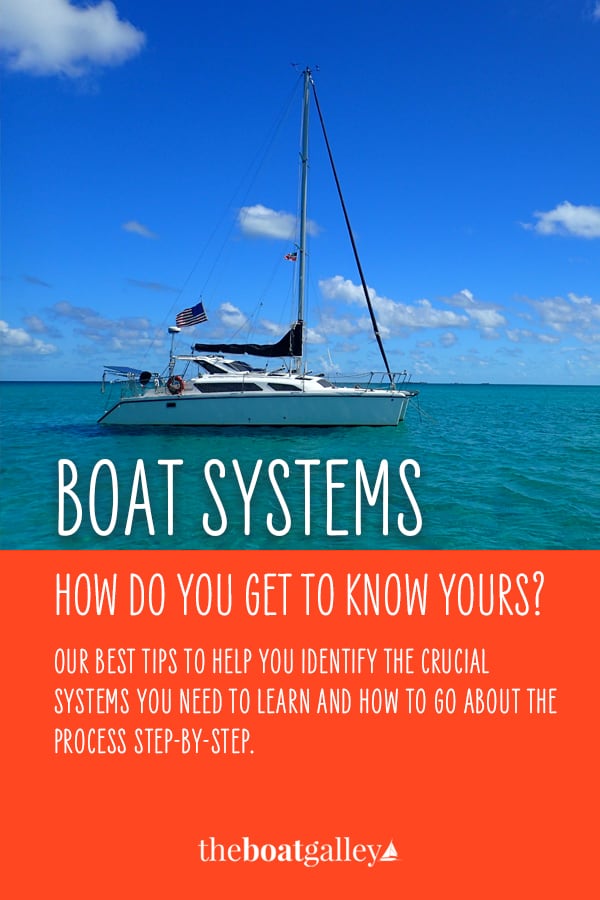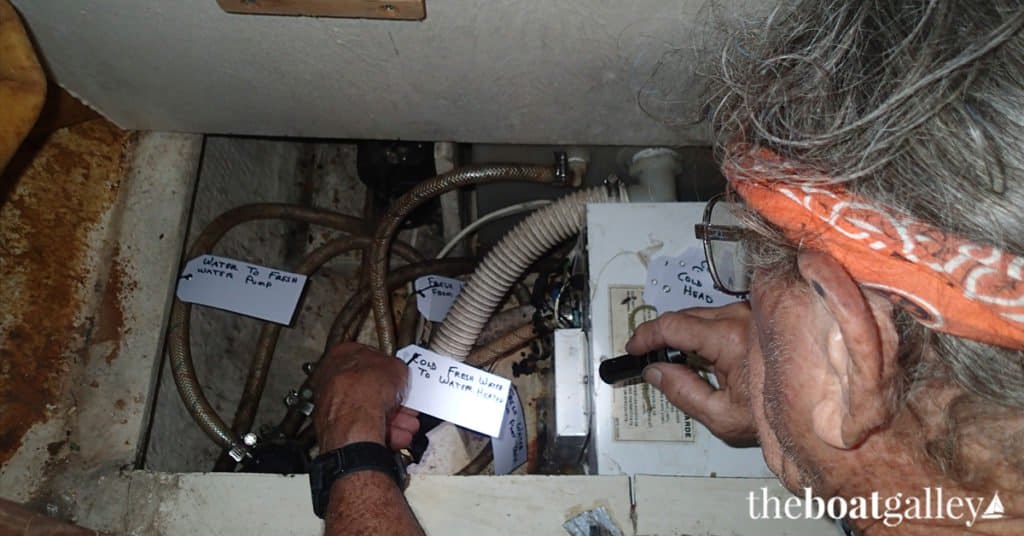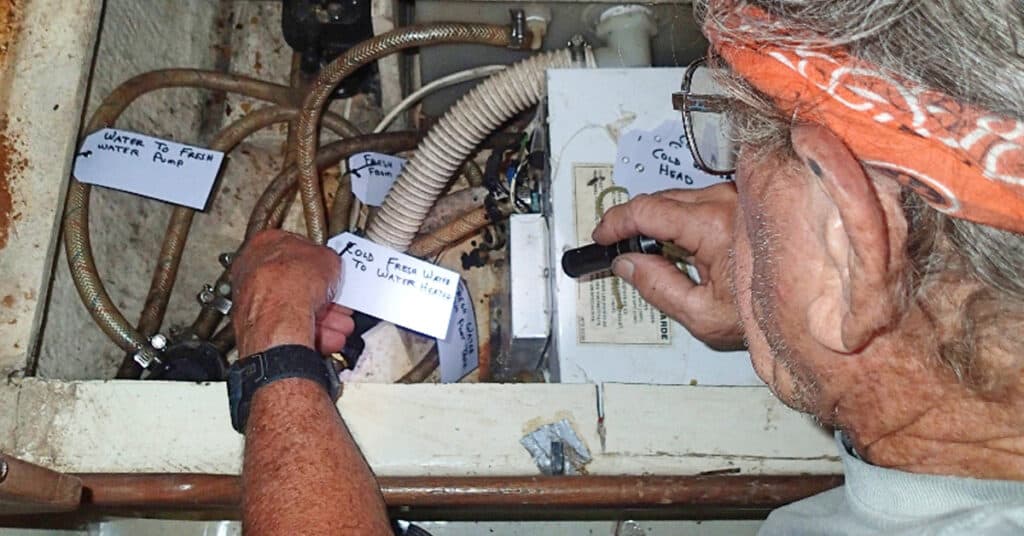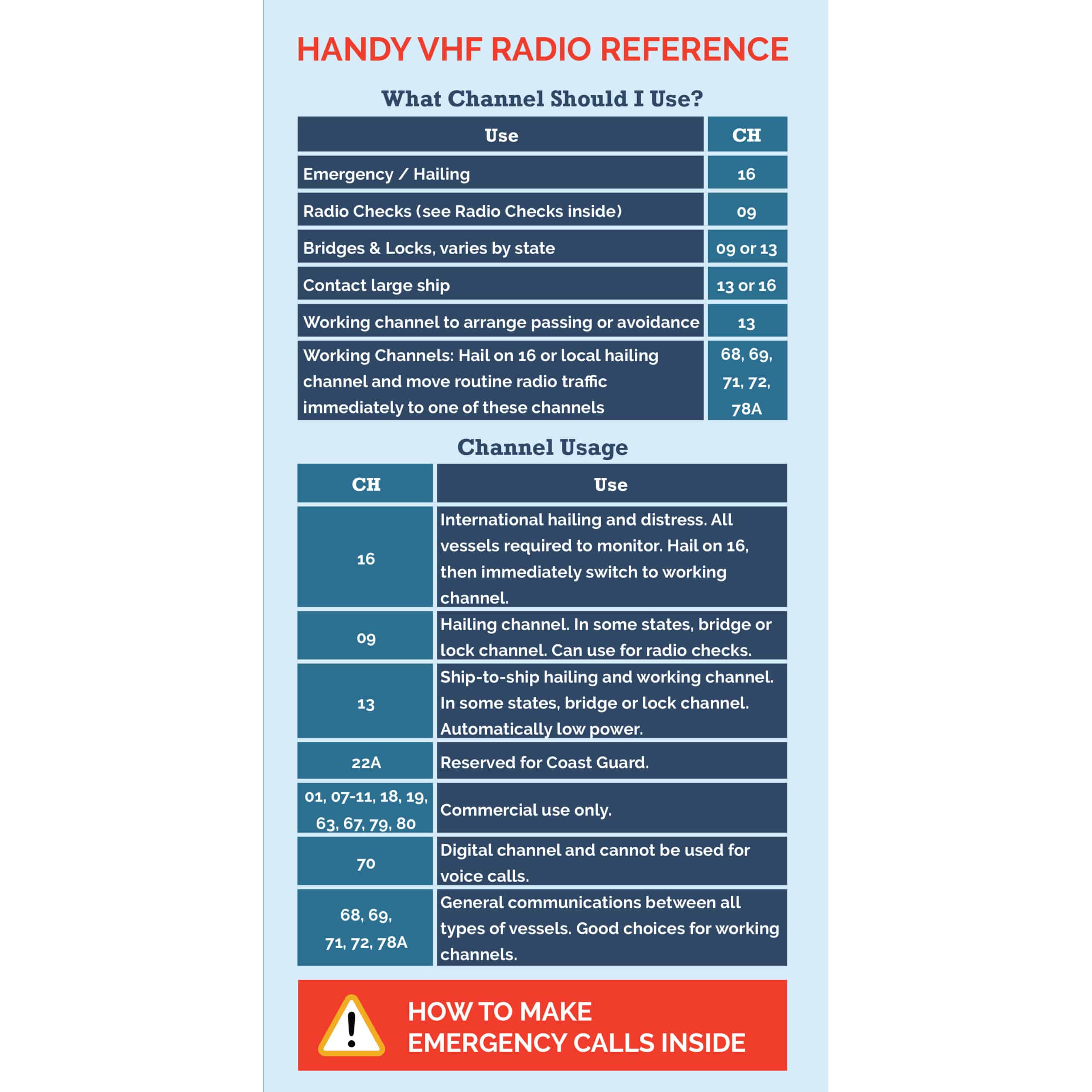
How do you get to know a new boat?
If you have recently purchased a boat, it’s easy to feel like you have no clue about how anything operates! Ditto if you’ve begun a new relationship and your significant other has a boat that you’re suddenly trying to learn.
My husband, Dave, has a background in heavy industry (blast furnace supervisor in a steel mill). He was the hands-on manager, who knew exactly how everything operated and was the first one called in an emergency just for that reason.
And when we bought Que Tal, I began to understand how he operated. When we bought her, the boat was in Puerto Vallarta, Mexico and we were in central Illinois. And when we made the “purchase trip,” the former owner was present and went over many of the systems with us. I assumed that on our next trip to the boat, we’d head out of the marina for a few days at a nearby anchorage.
Dave had a different idea. And frankly, his was much better.
How to Learn the Systems on a New Boat
Our next trip — actually, the next two trips of about a week each — we spent learning the boat right at the dock. Together, we traced and sketched out every system on the boat and labeled it all. That way, when we left the dock and were out on our own, we felt that we really knew our boat and how everything worked.
Example: Freshwater System
To use a galley-specific example, we began with the freshwater system. We started at the deck

Important Points in Learning Systems
Several things were important about this:
- We did it together. We were both learning the boat and often one of us would have a question or spot something that was good for both us to know. Some systems one of us understood better than the other initially but when we were done we both felt that we knew our boat . . . and that we had the same understanding of it (this last part is important).
- We sketched it all out (these drawings were left on the boat when we sold her but they weren’t anything professional). Having to draw it made us know exactly where things went, not just assume!
- We found a few problems (which we took care of) and things that we
adde to our routine maintenance lists. - We took our time and didn’t try to do too many systems in a day. We needed time to absorb it and we needed time to have fun, too.
- When we did finally leave the marina and head to an anchorage, we felt confident that we knew the basic systems. Sure, there was still a huge learning curve about sailing, motoring and anchoring her, but at least we weren’t learning everything at once, which is what we would have done if we’d just immediately left the dock.
- Since we’d been living aboard Que Tal while learning her, we’d had experience with actually using many of the systems and, particularly, the galley.
Getting to Know Our Second Boat
When we bought Barefoot Gal, we went through exactly the same procedure. Admittedly, it went a lot faster as there were a lot of similarities to systems on Que Tal. And we did a lot of it while we were still working on the boat in the boatyard. Again, time very well spent as things went pretty smoothly when we launched for the first time.
Two Tips to Help You Learn
Okay, for us it was easy as we’d just bought the boat and neither one of us knew her. But it often happens that there’s a new relationship, one person has a boat (and knows it) and the new squeeze starts going out on it, etc, etc. Okay, you’re not going to go over all the boat systems on the first date! But as time goes on and the relationship becomes a little more serious and you’re spending more time on the boat, I’d really recommend trying to go over the systems together. I think that sketching them out for yourself — not just looking at drawings that already exist or taking photos — is the best way to really understand how things work.
I also know from our cruising days that there will be some who say “but I’m not mechanical!! I’m not going to understand it!” Don’t worry — you don’t have to be super-mechanically inclined to understand the basics of how the boat works. And by tracing the systems instead of just trying to understand how something works in the abstract, I’ll bet that you find it makes sense. O
Boat Systems You Should Know
Here’s a quick list of the main systems that I can think of to check out (different boats will have different items, leave a note in the comments of any you think I’ve missed):
- Fresh water system
- Watermaker
- Propane
- Toilets (water intake, holding tank, pump out, discharge, or whatever your system may have)
- All thru-hulls (it’s good to have a drawing with all these displayed prominently)
- Engine fuel (important if you ever have to track down a fuel problem en route)
- Engine/transmission/generator cooling water
- Shore/wind/solar/generator/alternator power to batteries, including the charge regulators
- Battery switches
- Breaker panel and any other breakers (we had additional breakers for the windlass, washdown pump, and solar charging — you might be surprised at what you find!)
While it might have been a good idea, we didn’t trace out all of the wiring initially but did as we worked on various items.
Take It Slowly and Go Back Over Systems
Okay, I know it seems like a lot. Don’t try to do it all at once. Take it slowly and enjoy learning about your boat. Remember, you didn’t learn all about living ashore in a day. You just picked it up over a period of years. Don’t expect to know everything at once about the boat.
While everyone’s learning style is different, Dave and I found that after each of our times on the boat, we’d go back home and read more about the various systems both in books and on the internet. Things that had seemed incomprehensible to us before suddenly made sense. Our confidence at being able to master this new lifestyle just soared!
One Final Note
A final note. Most boaters and cruisers that I talk to all say the same thing: the first year is by far the hardest. There is such a learning curve. Other boaters are one of your greatest resources. While it was hard for Dave and me to ask for help, many times we found that there was an easy solution for what we thought was an almost insurmountable problem. And in time, we became the ones that were offering help instead of always asking for it!
Updated
This article was originally written on March 25, 2013. It was updated, expanded and republished on January 10, 2019. Older comments were not removed and may not apply to the current version.
Flatten the learning curve with practical how-to info that gives you the confidence to step into life aboard.
Start Learning Today

Carolyn Shearlock has lived aboard full-time for 17 years, splitting her time between a Tayana 37 monohull and a Gemini 105 catamaran. She’s cruised over 14,000 miles, from Pacific Mexico and Central America to Florida and the Bahamas, gaining firsthand experience with the joys and challenges of life on the water.
Through The Boat Galley, Carolyn has helped thousands of people explore, prepare for, and enjoy life afloat. She shares her expertise as an instructor at Cruisers University, in leading boating publications, and through her bestselling book, The Boat Galley Cookbook. She is passionate about helping others embark on their liveaboard journey—making life on the water simpler, safer, and more enjoyable.










Gil Lhotka says
I couldn’t agree more !!! There is a great sense of comfort that comes with at least knowing where most things are and go on a boat. Not only does it make you feel more confident before leaving the dock or moving aboard, or heading out, but it also ensures you will be a bit quicker at diagnosis and troubleshooting when a real issue comes up.
Your example of the galley makes so much sense, and if you see water in a certain area of the boat, you can sort of quickly refer to your notes or mental image on the map of hoses and think about what needs to be turned off and how to quickly find the source of that water.
Sharon Provenzano on Facebook says
Great article, especially for those of just starting out (don’t have our boat yet), thank you for sharing.
Sherri Brenner says
Thanks so much for this article. We recently purchased a Westsail 32 with the intention of living aboard and blue water cruising. My Husband and I took this article to heart and immediately began going over all of our systems. Wow, what we have learned. Along with mapping out our water and electrical systems, we have identified many water lines that need replacement.
Gladys Strickland says
Thank you so much for this! I am buying my first boat tomorrow, and as a single female without a lot of mechanical experience, I am feeling a bit overwhelmed. This is exactly what I need to do to learn her systems.
Carolyn Shearlock says
Congratulations! You’ll love it!
Sheryl Shard says
Great advice that I will pass it along!
Carolyn Shearlock says
Thanks Sheryl! And Harmony and Mary!
Harmony Paulsen Burright says
Such great advice – wish I had read this early on. We learn as things fall apart 🙂 – hard to stay on the winning side of that equation sometimes.
Mary Rehfeldt says
On Navy ships piping is labeled (H2O, Jet Fuel, Air) as is the direction of flow. Makes things easier in the event of a mishap or during servicing.
Kevin Baerg says
Awesome post and excellent idea! We have just bought a new boat, moving from power to sail – which is another learning curve! I really like the idea of going over the systems together. I find that if my wife knows the system, she becomes a fantastic resource in problem solving down the road! Many times bringing a fresh perspective to boot. 🙂
Chris says
When we took delivery on the boat we also took hundreds of “before” pictures. Since then when I open up a compartment for some reason, I’ll open up before picture and look for subtle changes I might not spot without a reference. SO far we could buy a new camera on what this has saved us by catching problems early.
Kent Takacs says
Great ide
Samm Souvigny says
Ryan Hof why haven’t we done this?= we need too! Would save a lot of hassle
Charliss 'Char' Smith says
Wonderful advice. My S.O. and I purchased a Cal 33 in March and have been learning each time we board (even when just “camping” in a bajia for the weekend is a learning experience for both of us).
Ellen @ The Cynical Sailor says
This is what I’ve slowly been doing with our new boat. It’s been great for learning more about the different systems as I go. I’m not a great drawer, so instead of sketching our systems, I’ve been taking photos and using them to make diagrams in PowerPoint.
Carolyn Shearlock says
Good idea — it’s the same thing of making you really figure it out to have a diagram.
Rick Garvin says
Christine, good read.
Heather Howe says
I have saved this very valuable piece of info!!!!!!
Anne Ellingsen says
We are in that learning curve now. Just purchased 38′ Sabre. Good information
Lisa Kelly says
We are newbies to our 41 ft Tartan Tock. Lots to learn, but exciting too!
Beth Allen McLeod says
So smart!!!
Debbie Bailey-Laubacher says
Good tips! Thanks
Lynne Hubbard says
Thanks for running this article again! We just bought a Sabre 42 and I’ve been feeling overwhelmed about having to learn the systems. You’ve provided the systematic, common sense approach I’ve needed!
Carolyn Shearlock says
Glad it’s helpful and congrats on the new boat! Eat the elephant one bite at a time 🙂
Bill Miller says
This is an awesome article for anyone entering boat ownership and the nautical world. Things only go wrong when you’re a long way from the dock. Great learning advice and might get you to safe harbor in a jam.
Doug Stephenson says
I have literally spent hundreds of hours following and drawing each ships systems that I sailed on. Best way to learn your boat.
Larry Rau says
This picture epitomizes the problem with “yachts’, There Is NO Documentation.. not from the factory, and certainly not after the fact. Permanent Laundry markers get my vote.. and so do LISTS and Diagrams Kept In Books.. near the helm ! People do the STUPIDEST THINGS.. on my new cruising boat.. I found a previous owner had buried The Main Circuit Breaker for all the DC systems.. inside a storage locker.. where no human could ever see it ! I only discovered it by tracing out battery cables ! I had to stick a camera in the hole, and photgraph it blind.. to read it;s labels and ratings ! Major Systems and Controls need to have Labels, and They Need to Have LAMINATED CARDS near by, so if the last man standing is a stupid passenger, they can figure out how to operate important controls ! Fisher 30 Pacific Child
Cori Grant says
Thanks Carolyn. Good read. Save and share worthy for sure.
Janine Georgette says
Wow! This is just what I needed. Even though I don’t have a boat yet, I’ve often wondered how the hell Im going to get past the initial influx of everything to learn when I do get one.
Now I have a plan and it feels so good! 😆
Carolyn Shearlock says
You’re going to do great when you get it😎
Big Family Small World says
Hi – just found your site and this is the first article I’ve read. Fantastic! We are a family of 6 who have been backpacking around the world for 7 months and are now shopping for a used catamaran to continue our explorations by sea. We are really enjoying learning about all the factors that go into making a good purchase decision. This is the next step. Gives us a mental map of what we should plan to do after we take possession – super helpful. Thanks so much and I look forward to reading more! ~Matt
Randy Kulzer says
Some other possible tips:
Print out specific pages from the owners manual, place them in plastic sleeves, and tape them in appropriate spots (e.g., the correct connect disconnect procedure for shore power taped inside the door of the main breaker panel).
Create labels using a Brother P-Touch. I wrap these labels around each end of coaxial and power cables to indicate to which piece of equipment each cable connects. I then cover (wrap) each label with clear packing tape to keep the labels from falling off. In the case of fused power cords, i also include a label like “2 A” near the inline fuse holder to indicate the proper replacement fuse value.
Finally, I’ve also wrapped different colored duct tape around each end of different coaxial cables.to “color code” these cables. I then use two smaller zip ties to keep the duct tape from unraveling. In combination with the labels described previously, all cables can be easily identified and matched with the appropriates piece of equipment..
Carolyn Shearlock says
All great ideas!
Erica Spencer says
My partner bought his Sabre 36 last year and we were quite overwhelmed by all that we had to learn. I race sailboats but knew very little about cruising and all the systems I needed to know. We felt blessed to be learning together and felt that the lessons we learned were strengthening our new relationship. This summer we will do what you suggest together, one system at a time. Thank you for this wonderful article. We will follow your lead. Thank you!